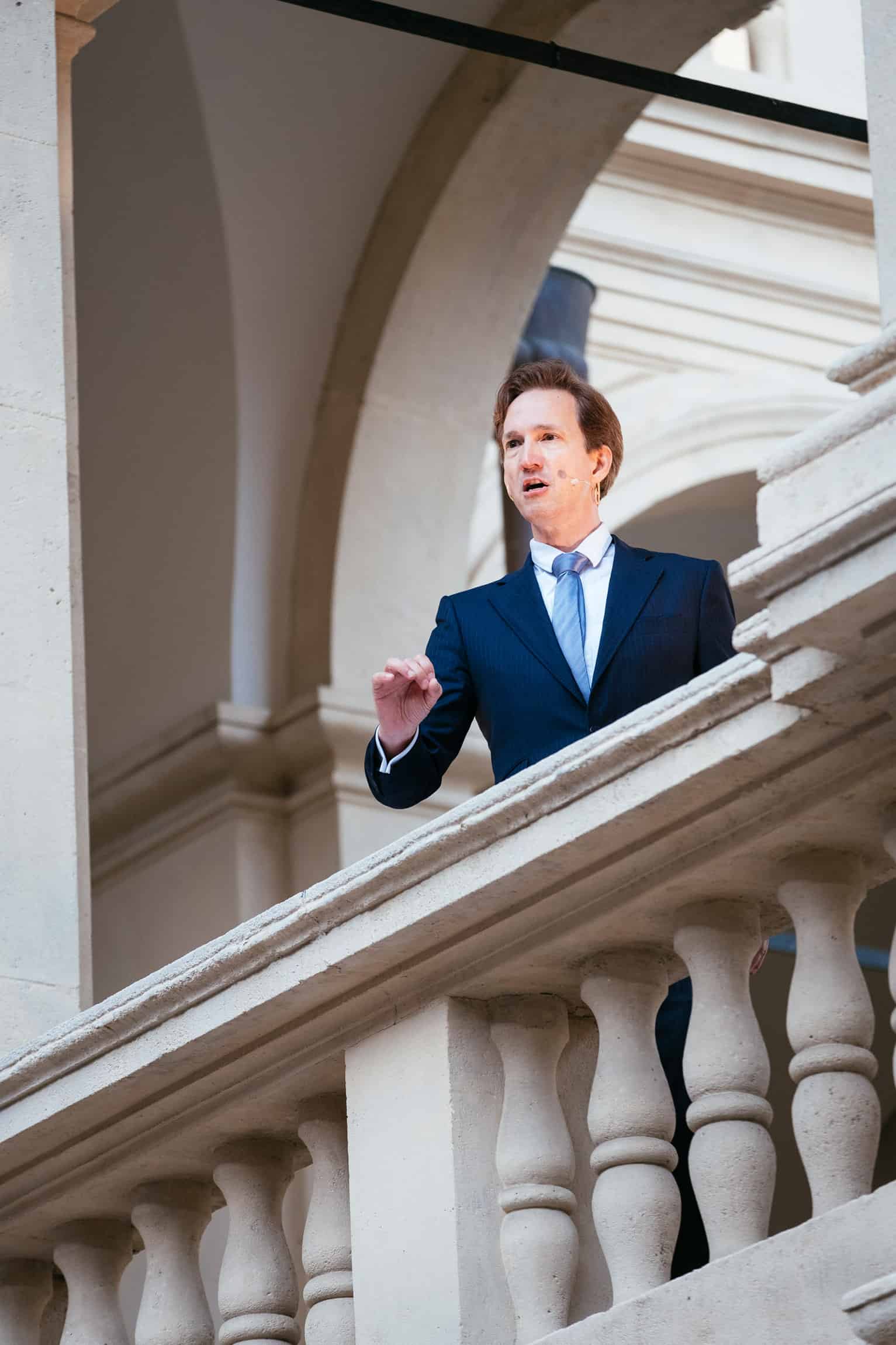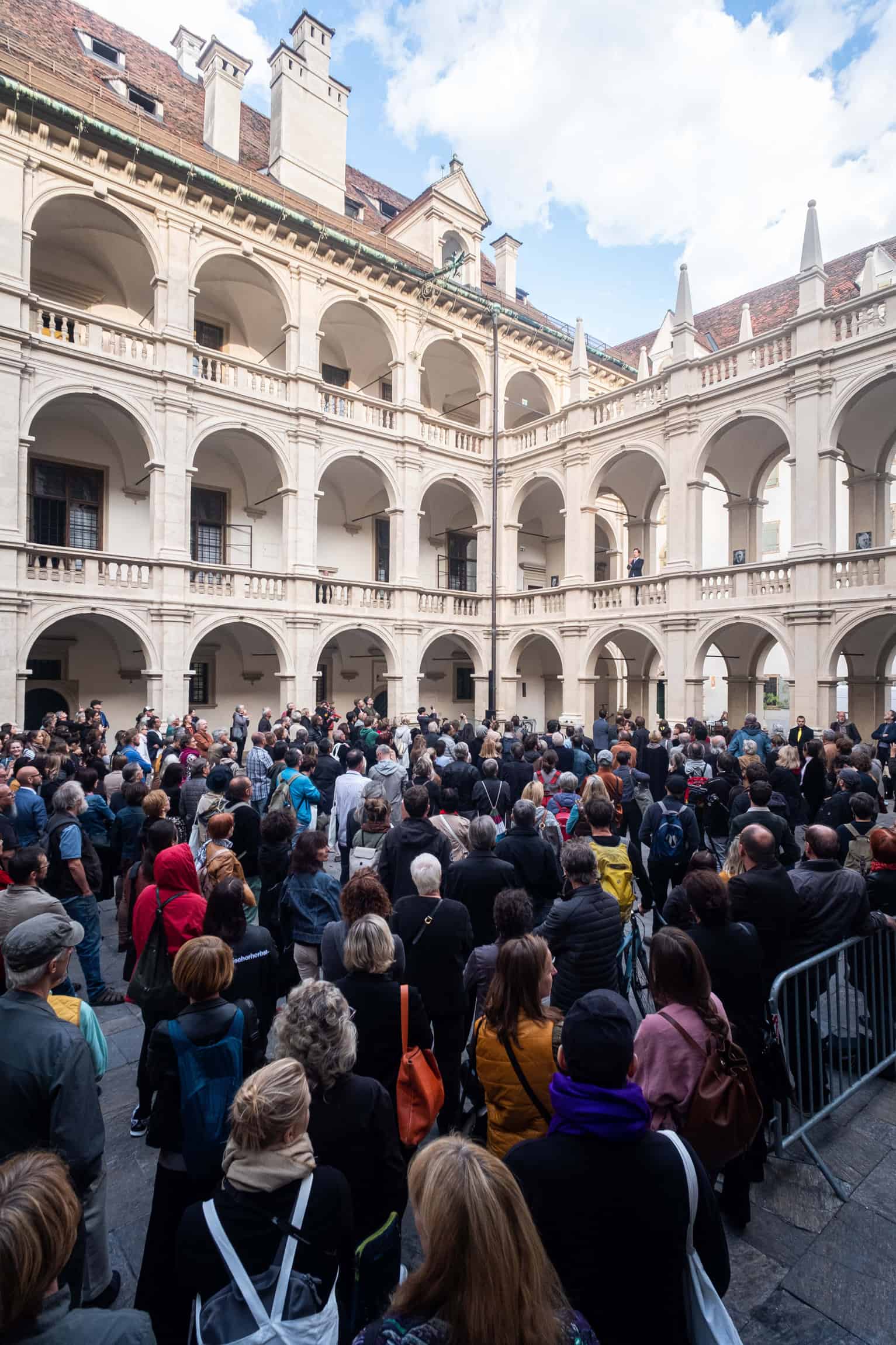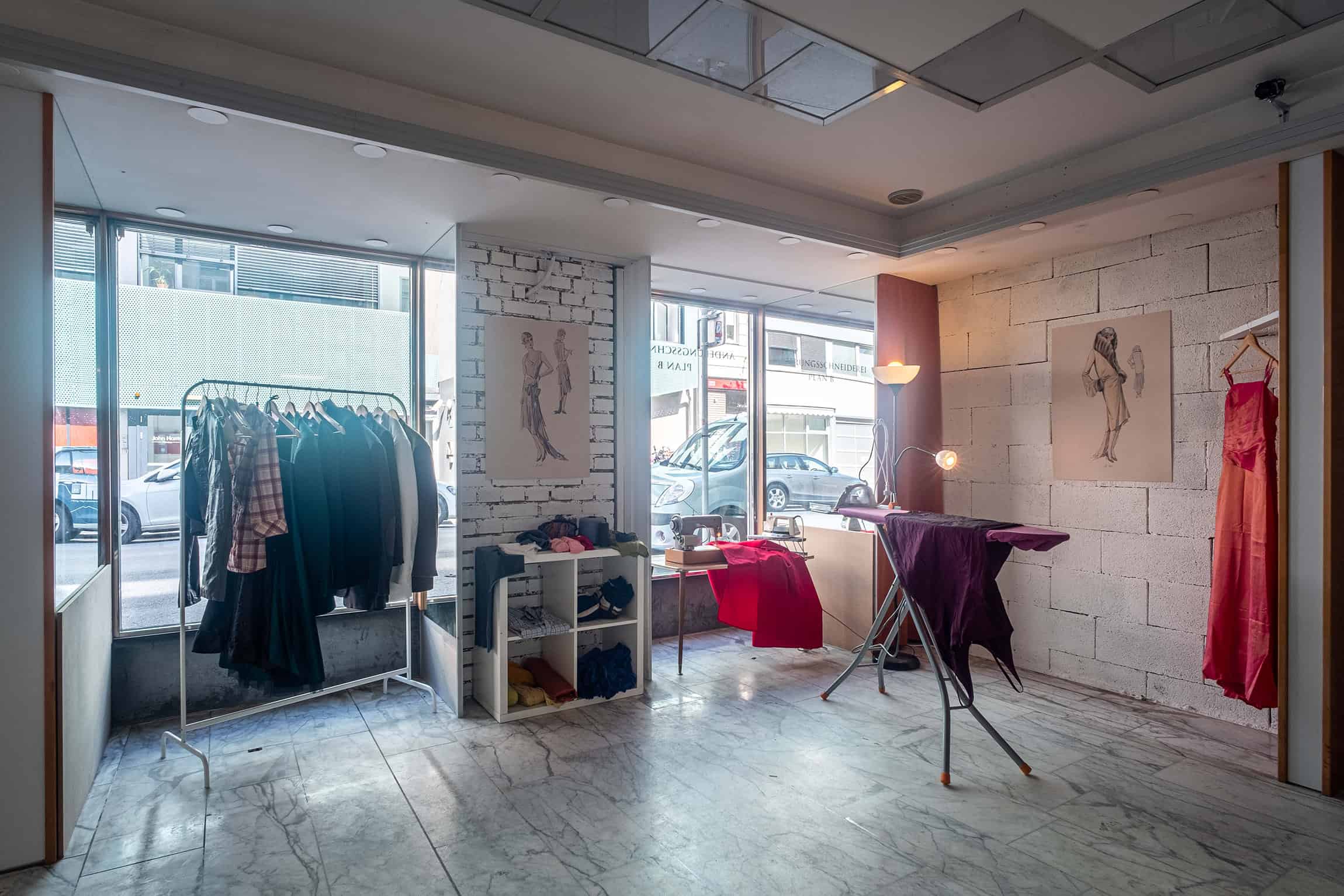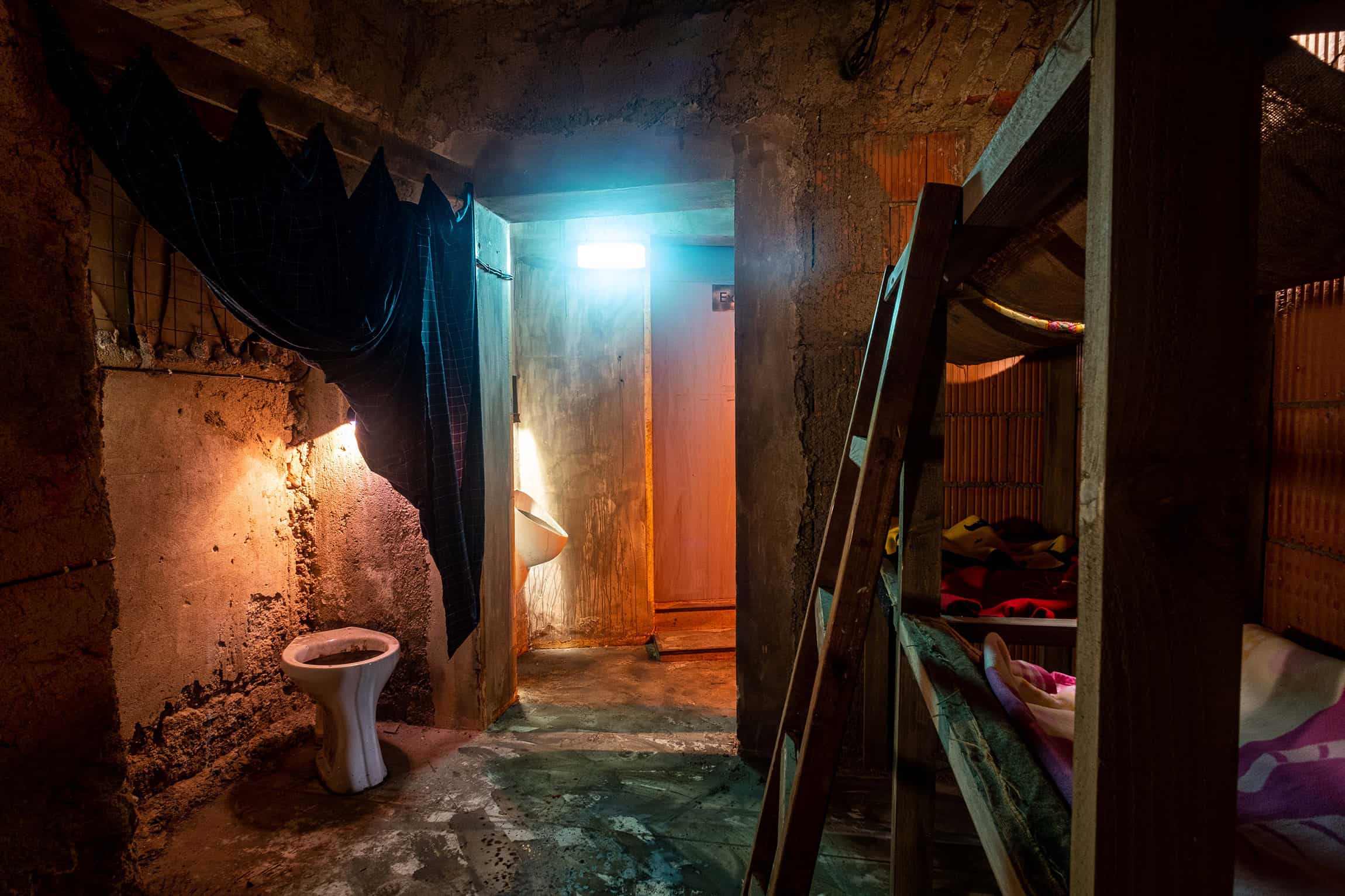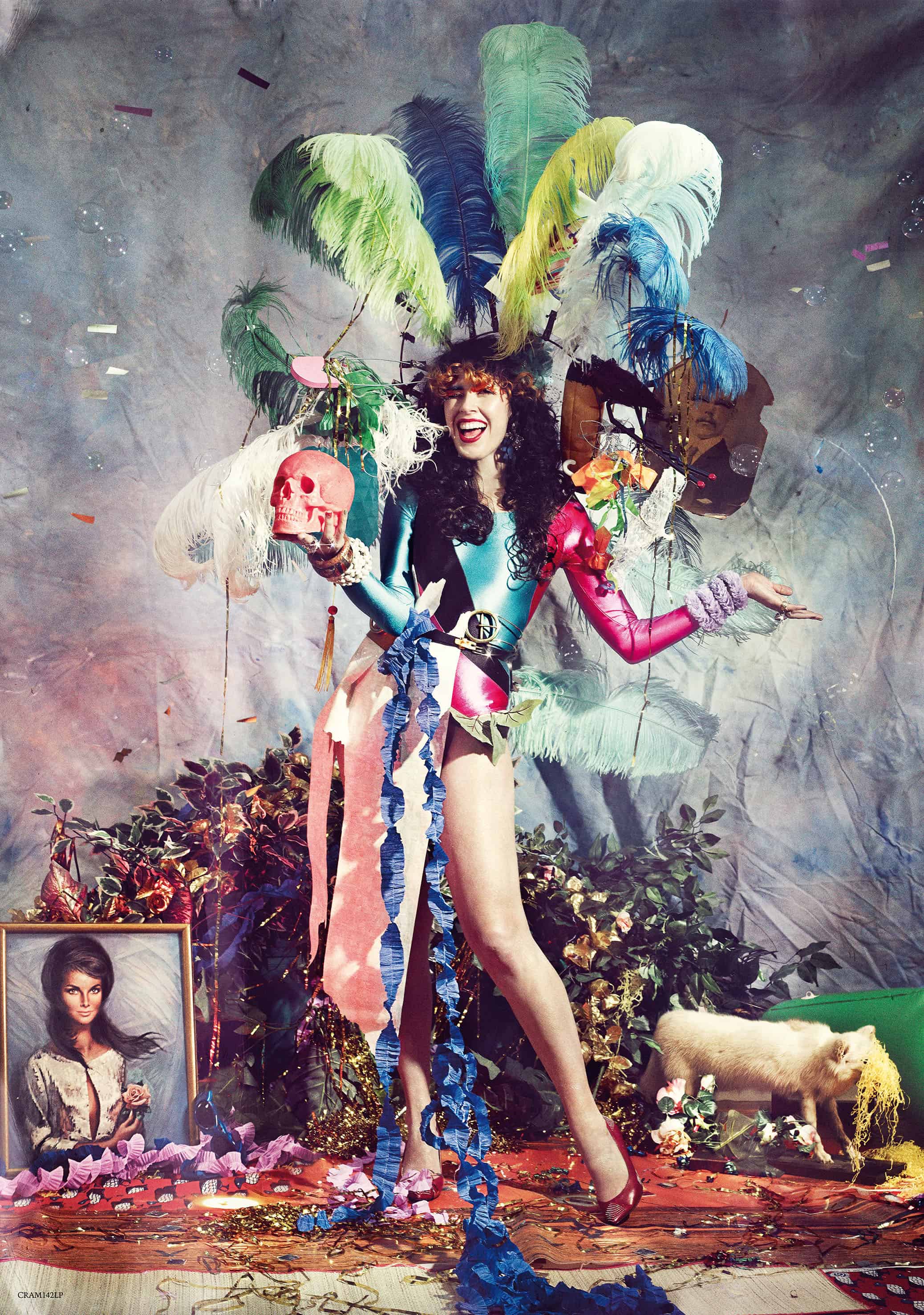Steirischer Herbst Festival
“The abyss is never far away from a feast”
Graz, Austria. 19.09–13.10.2019
In the Austrian Styria region, Autumn started on the 19th of September. The oldest European “new art” feast, Steirischer Herbst, took over the city for the fifty-second time. Festival-related exhibitions occupy a solid part of Graz cultural institutions, performances occur in a carnivalesque manner, and public-space interventions pop up.
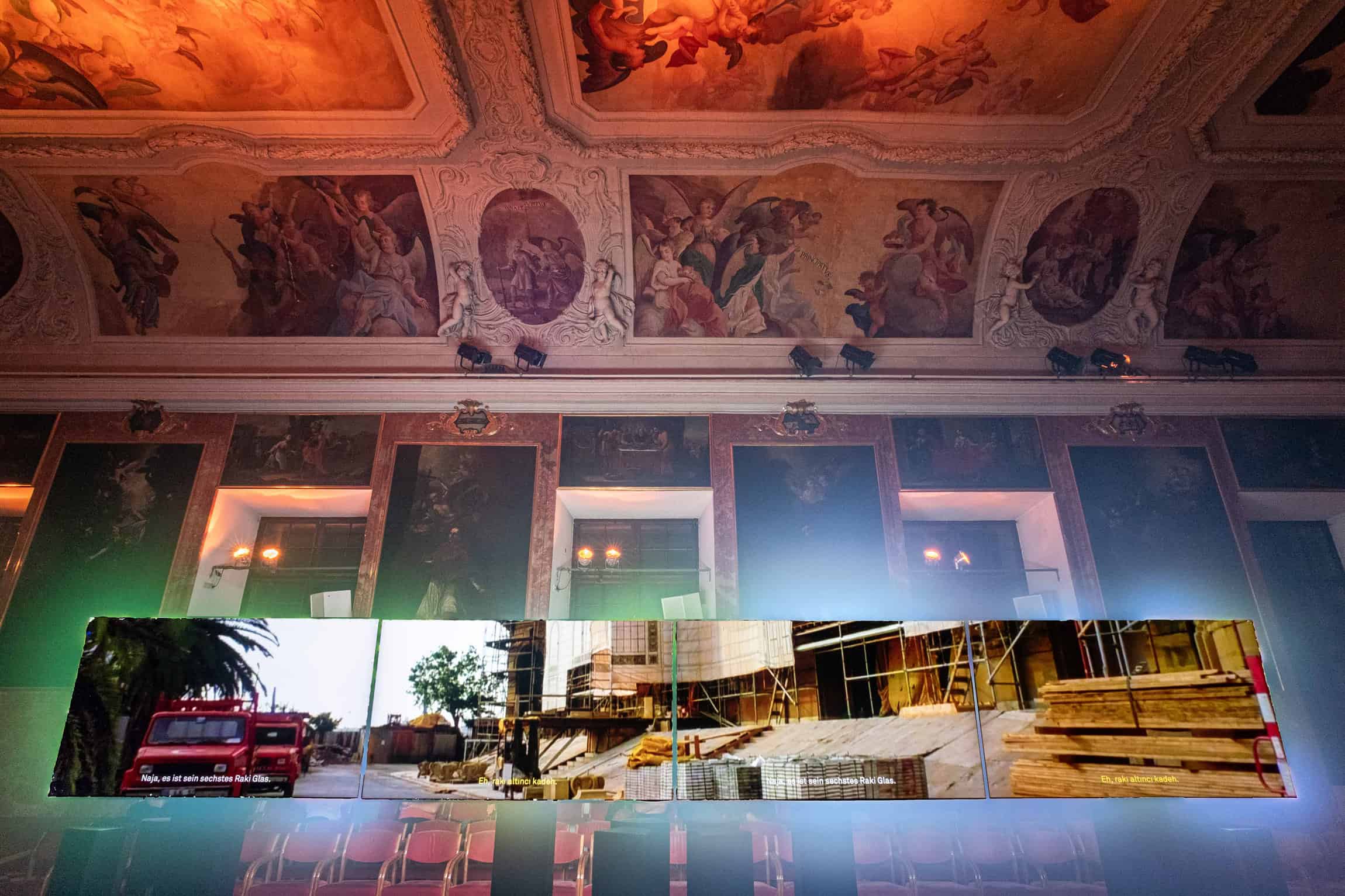
Michiel Vandevelde, Human Landscapes—Book II, 2019, performance, Großer Minoritensaal, photo: Mathias Völzke
Bonded to local structure and history, the festival’s programme copes with Graz’s architectural heritage as well as contemporary Austrian issues – to begin with. In order to realise how dense the net of connections is, even a quick spin around the exhibition spaces will do. The signature Styrian green of Gruppa EE’s intervention brightens up the entrance to Plaias Attems. Upstairs Giorgi Gago Gagoshidze’s video The Invisible Hand of My Father radiates in the darkness, fusing recollections of the dramatic building site accident with a tongue-in-cheek commentary on the free market’s absurdities. In Forum Stadtpark, Daniel Mann and Eitan Efrat offer insights into Bad Gastein wellness culture and inhalations with the town’s spa’s slightly radioactive gases. On the way, the troubled history of South Tirol unfolds, as told by Riccardo Giacconi in Grazer Kunstverein through heraldic research and aesthetics of propaganda. Only the thin wall of Künstlerhaus separates Jeremy Deller’s emotionally-charged account of Brexit demo from Jasmina Cibic’s fantastic feature movie-like reflection on architectural gifts as potential cultural and political Trojan horses. The Grazer rendezvous would culminate in front of Michael Portnoy’s intense splashy video on mechanical sex choreographies. How to conduct such diverse voices to resonate in unison?

Michael Portnoy, Progressive Touch: Series 1, 2019, video installation, Helmut List Halle, Graz, photo: Liz Eve
Crucial is “Grand Hotel Abyss”, this edition’s motto. Upon learning about it, it was inevitable to picture mythical mansion hidden in the Alps – especially on the delayed train rolling with dignity through the valleys preceding Graz. What brought to mind the infamous resort from Thomas Mann’s masterwork, or the bubble-gum pink from The Grand Budapest Hotel, is, in fact, nothing funny. The phrased coined by the Hungarian philosopher Georg Luckás described Frankfurt School members’ alleged detachment from dreary reality in favour of theoretic passivity, as if they were residents of a comfortable pension encased in a void. In this exact tension between pleasurable and disturbing strength of current Steirischer Herbst lies. Curatorial actions induce interchangeably: states of comfortable numbness and responsible awareness.
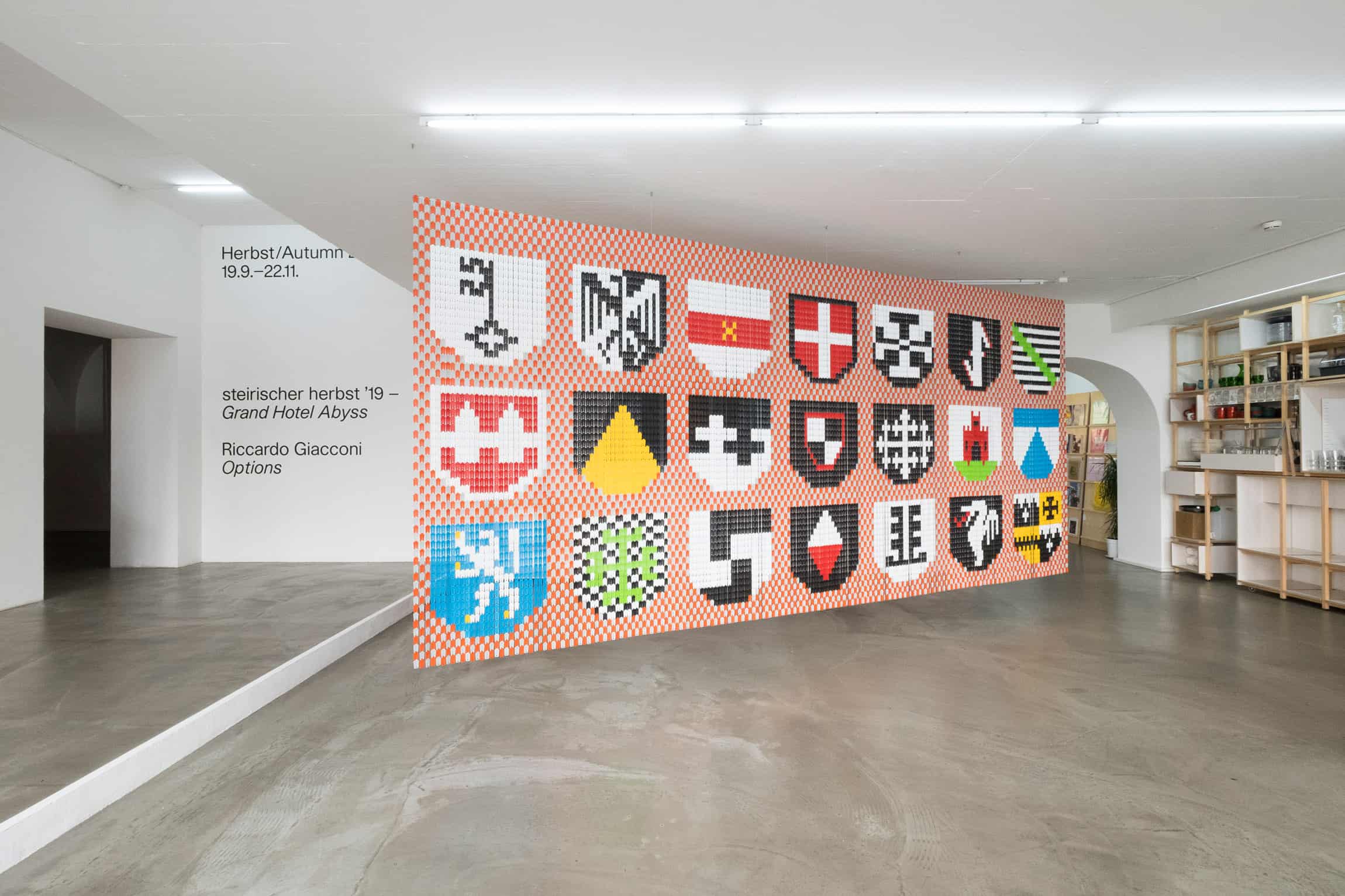
Riccardo Giacconi, Options, Wappenrolle, plastic curtain, installation view, Grazer
Kunstverein, photo: Clara Wildberger
Politicalness constitutes solid lining, echoing from all the corners of the festival’s spaces. This strategy might have as well led to naïve moralising. But director Ekaterina Degot and curator David Riff are experienced in the subject – the duo was previously in charge of the successful Perverse Decolonisation research project in Cologne, dealing with the rise of nationalist voices in the global debates and post-colonialist heritage.
Zorka Wollny, Voicers—Oratorio for Five Speakers and a Listening Crowd, 2019, performance, Landhaushof, Graz, photo: Mathias Völzke
Zorka Wollny, Voicers—Oratorio for Five Speakers and a Listening Crowd, 2019, performance, Landhaushof, Graz, photo: Clara Wildberger
Zorka Wollny’s amusing take on the melody of political speech inaugurated the festival’s opening. Smartly dressed performers appeared sequentially on the balconies of renaissance Grazer Landhaus, chanting trivial phrases to the steady beats and eventually outshouting one another with semantically empty slogans. Anti-establishment voices of past and present joined their musical-like debate, yet can they be trusted? In the rambling cacophony, their claims blend with insincere promises.
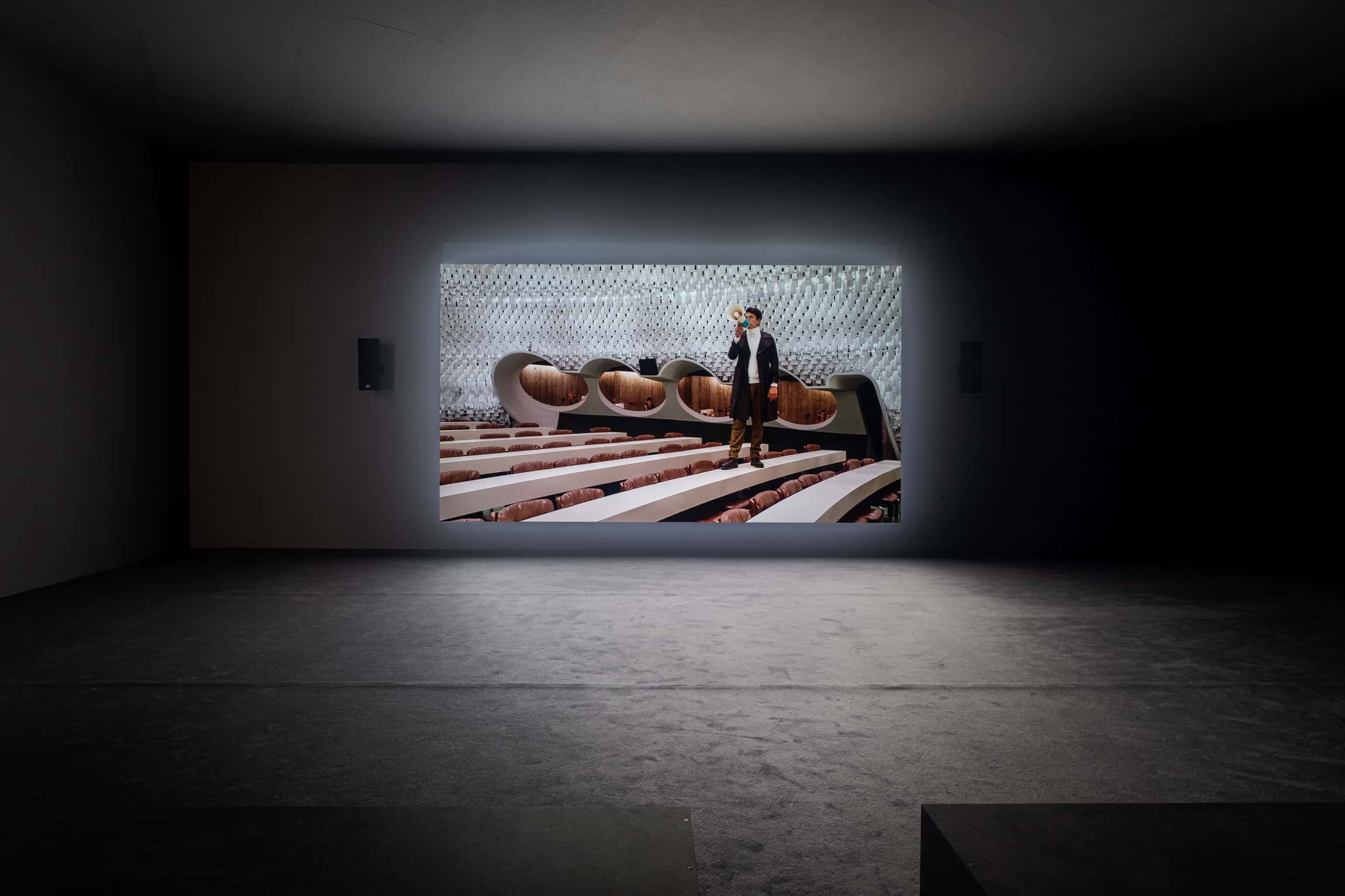
Jasmina Cibic, The Gift—Act I, 2019, video, installation view, Künstlerhaus, Halle für Kunst & Medien, Graz, photo: Mathias Völzke
But dear apocalypse companions, as Ekaterina Degot said during the initial speech: “The abyss is never far away from a feast”! Sometimes all that is left on the Titanic of the contemporary times, is to lose yourself in the maze of Grazer Congress’ magnificent rooms and enjoy the flamboyant performance. Somewhere between sips of rosé wine and fig & cheese blini indulgence, one of the vernissage’s highlights shone bright like a string of led party lights. Glowing Cibelle Cavalli Bastos’ time travelling avatar, Sonja Khalecallon, invited participants to the plastic-fantastic-post-apocalyptic cave, visually rich and glittery like a photo taken with every Instagram filter possible. When twisting and turning in the flirtatious dance, Sonja’s modulated voice overlapped with paradise birds’ chirps, what was followed by avatar’s memories of environmental Armageddon. The dystopian undertone added this extravagant act depth and contemplative quality. In the meantime, Gernot Wieland’s self-ironic performance lecture entertained better than any stand-up, reflecting on Austrian mentality, his obsession with Kafka and visions of floating into a giant bowl of pudding with Karl Marx. In one of the lavishly ornamented halls of the historic building, Arnold Schwarzenegger’s realness met the architectural vibe thanks to Jakob Lena Knebl. Red-and-golden painted bodybuilders lifted frail vases to the rhythm dictated by DJ Markus Pires Mata’s pulsating techno.
Artur Żmijewski, Plan B, 2019, installation, Girardigasse 8, Graz, photo: Mathias Völzke
Artur Żmijewski, Plan B, 2019, installation, Girardigasse 8, Graz, photo: Mathias Völzke
If anybody would oversleep the revolution in a comfy Grand Hotel suite and realise all went terribly wrong, there is always a “Plan B”. Installation proposed by Artur Żmijewski occupies space on the narrow Girardigasse under disguise of a tailoring atelier, straight from the ’60s. Nothing even slightly resembling Żmijewski’s aesthetics. But after a while of suspense, visitors would discover a secret passage to the windowless, dusky shelter for the uncertain times. Smelling of wine and wax, or something even sweeter, it is a perfect example of Steirischer Herbst ability to evoke contradictory sensations.

Jaśmina Wójcik, Be My Guest, 2019, installation, Puch bei Weiz, photo: Clara Wildberger
What about running away to some remote lands? Over the hills and dales, Jaśmina Wójcik’s timber-crate spire soars amongst the orchards. Modelled after the Monument to the Third International, it pays tribute to the workforce of the well-developed apple industry the region is known for. Slight apple-obsession seems to have taken over Styria, captured in the artist’s photo story for the festival’s online Vorherbst Magazine. It is easy to submerge in pie and cider fantasies, forgetting that under the crusty surface lies underpaid labour of seasonal migrant workers. Be My Guest, the installation title, served as an authentic invitation. At the base of her crate mountain, Wójcik organised sound-creating workshop for fruit industry’s employees.

Keti Chukhrov / Guram Matskhonashvili, Global Congress of Post-Prostitution, 2019, performance, Orpheum Graz, photo: Mathias Völzke
The richness of Steirischer Herbst programme was at times its curse. But can you ever have it all? Blame it on the festivals’ nature. Nonetheless, few events could have been crossed out of the agenda. Keti Chukhrov’s and Guram Matskhonashvili’s Global Congress of Post-Prostitution ate its own tail. Glittering eyeshadows, a horse head and “post-everything” multimedia visuals were not enough to craft a meaningful theatrical play; even when based on the promising concept of prostitution theory. Michiel Vandevelde’s Human Landscapes – Book II felt like an 800-minute performance, not one-and-a-half hour one. It cannot be denied value, especially with beautiful Nazım Hikmet’s poems as its core material. Though the baroque surroundings, monotonous narration, loosely related video footage, choral chansons in German – it was too heavy as for the third evening in the row.

Jakob Lena Knebl and Markus Pires Mata, The Style Council, 2019, performance, Congress Graz, photo: Liz Eve
What Stieirischer Herbst adds to the current debates? Massive amount of specially commissioned, politically-charged artistic production and the über-metaphor of the Grand Hotel, calling for the constant evaluation of our stances. Isn’t it this fictitious mansion, in fact, the same as the good old “bubble”, also serving as the imaginable symbol of elitist isolation? Steirischer Herbst elevated this worn-out concept, giving it a vivid and visually convincing presence. It daintily examined the notion of a beautiful disaster and created the space of the peculiar experiment when opening extravaganza’s pleasures transmuted into a contemplative hangover. It would be exciting to see how the outcomes materialise in the upcoming edition. Hopefully, by then, the apocalypse will not become any less pleasant.
Written by Natalia Dorocka
Jasmina Cibic, The Gift—Act I, 2019, video, installation view, Künstlerhaus, Halle für Kunst & Medien, Graz, photo: Mathias Völzke
Giorgi Gago Gagoshidze, The Invisible Hand of My Father, 2018, film, installation view, Palais Attems, Graz, photo: Liz Eve
Cibelle Cavalli Bastos, poster from the series Sonja Khalecallonin Las Venus Resort Palace Hotel, 2010, photo: Socrates Mitsios







